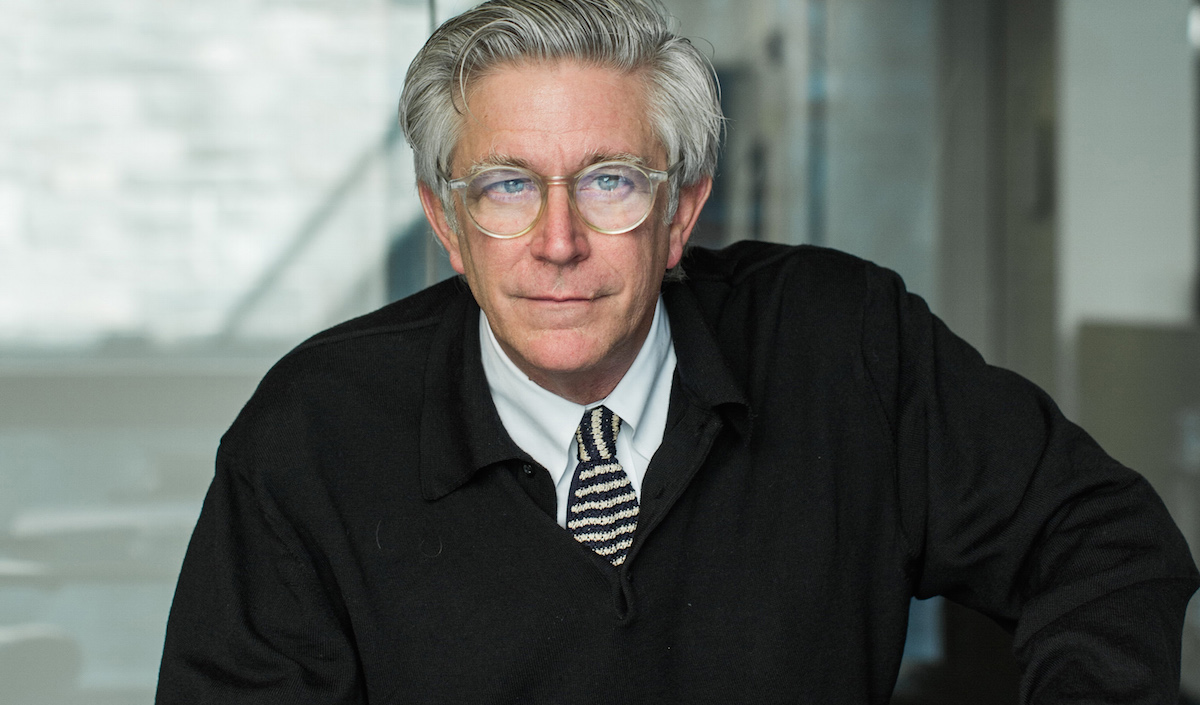Bill Hellmuth, AIA, officially took over as HOK’s Chief Executive Officer on April 19, with longtime CEO Patrick MacLeamy, FAIA, moving to chairman as part of a planned succession process that the firm first announced Jan. 25.
Hellmuth, who is based in the firm’s Washington, D.C., studio, has been HOK’s president since 2005. The firm will be led by a design principal for the first time since 1990, when Gyo Obata stepped down to assume the role of chairman. Hellmuth brings insight on managing the creative process—balancing the art and the business to generate the best design solutions and most value for clients. He will continue in his role as HOK’s firm-wide president and design principal for projects in the Washington, D.C., area and worldwide.
“Design excellence will define our future,” said Hellmuth. “I joined HOK in 1991 for the opportunity to be part of a practice that had the opportunity to do the best design work of its time. We’re now creating design solutions that address some of the world’s greatest challenges. We’ll continue broadening the scope of our creativity and problem solving and using design thinking to strengthen our design culture. This will continue to attract the best people and clients to HOK.”
Read more about Bill Hellmuth and his vision for the future of HOK in this Q+A profile.
HOK has current projects in 75 countries, and it has designed major urban plans, buildings and interior environments. Current and recent projects include the 80-story Capital Market Authority Tower in Riyadh, Saudi Arabia; the Porsche Cars North America Experience Center and Headquarters in Atlanta; the Anaheim Regional Transportation Intermodal Center (ARTIC) in Anaheim, California; and Mercedes-Benz Stadium in Atlanta.
HOK is a global design, architecture, engineering and planning firm with 24 offices worldwide. DesignIntelligence consistently ranks HOK as a leader in sustainable, high-performance design and technology innovation.
Related Stories
Architects | May 17, 2015
NCARB wants the title ‘architect’ confined to those who are licensed
The Council is urging state licensing boards to come up with a substitute for the pre-licensure title ‘Intern.’
Museums | May 13, 2015
The museum of tomorrow: 8 things to know about cultural institutions in today’s society
Entertainment-based experiences, personal journeys, and community engagement are among the key themes that cultural institutions must embrace to stay relevant, write Gensler's Diana Lee and Richard Jacob.
Industrial Facilities | May 11, 2015
SOM-designed Manufacturing and Design Innovation Institute opens in Chicago
The new space will be a place for academia, industries, and civic bodies to collaborate.
Sponsored | Roofing | May 11, 2015
How architects can tap into the expertise of their metal roof manufacturer, part 2
Here are three things metal roof manufacturers can do to help the architect
BIM and Information Technology | May 10, 2015
How beacons will change architecture
Indoor positioning is right around the corner. Here is why it matters.
Architects | May 10, 2015
Harness the connection between managing risk and increasing profitability, Part 2
In Part 1, we covered taking control of the submittals schedule and managing RFIs. Let’s move on to properly allocating substitutions and limiting change orders.
Architects | May 10, 2015
Harness the connection between managing risk and increasing profitability, Part 1
AE firms need to protect themselves against vague contractual and procedural situations during all phases of the project in order to minimize their liability and exposure to risk, writes AEC industry consultant Steve Whitehorn.
Building Team | May 8, 2015
Construction industry adds 45,000 jobs in April
The construction industry saw an increase in jobs during the month of April after losing approximately 9,000 positions in March.
Building Team | May 8, 2015
Surety bond forms specifically for design-build projects now available
The documents are the first of their kind to be coauthored by designers and builders.
High-rise Construction | May 6, 2015
Parks in the sky? Subterranean bike paths? Meet the livable city, designed in 3D
Today’s great cities must be resilient—and open—to many things, including the influx of humanity, writes Gensler co-CEO Andy Cohen.

















